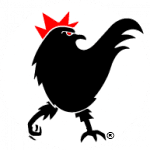12 May What is a 1031 Exchange?
What is a 1031 Exchange?
When you are investing in real estate, one of the first things you should think about is how to maximize profits while minimizing losses and tax liabilities.
A 1031 exchange is a great way to do just that.
Investing in a real estate property (including land!), can earn you a return on investment in ways such as rent, or flipping the property to make a profit. When the time comes and you’re ready to sell the property, you obviously want to list it for more than you paid for it, and get a solid return on investment along the way.
The amount you sell the property for over the amount you paid for it is your profit, or capital gains. When it’s time to file taxes, the IRS will take a percentage of your capital gains, making your profit margin smaller.
There are many other investment opportunities that can result in capital gains, but real estate capital gains may be deferred with a 1031 exchange. Below, we will share an easy-to-understand explanation of what a 1031 exchange is, and how it can apply to you.
OVERVIEW
Getting its name from Section 1031 of the U.S. Internal Revenue Code, a 1031 exchange allows the deferral of paying capital gains taxes when selling an investment property and reinvesting the proceeds from the sale in one, or multiple properties of like-kind value.
HOW IT WORKS
The owner wants to sell a property while acquiring one or multiple properties. Instead of selling the property and purchasing a new one, it would be structured as an exchange of the properties to defer paying taxes on any profits over the original investment price.
PARTIES INVOLVED
There are typically four parties involved in a 1031 Tax Deferred Exchange:
- The Taxpayer/Exchangor: is the initial seller that wants to defer the taxes and acquire new property(ies).
- The Buyer: purchases the taxpayer’s property.
- The Seller: owns the replacement property that the taxpayer is acquiring.
- The Qualified Intermediary*: could also be called the facilitator. The Qualified Intermediary facilitates the entire transaction, and acts as a liaison between all parties.
*A number of people can not be your qualified intermediary, including, but not limited to: yourself, anyone related to you or anyone who had a financial relationship with you over the past two years. You must enter a written agreement with your qualified intermediary in order to have a valid 1031 exchange. If you have any questions about who can be your Qualified Intermediary, please contact us today and we will be happy to assist you in finding one.
Intermediaries are, to put it simply, complicated. Since intermediaries are not regulated by the state, we highly recommend asking someone knowledgeable about the process for recommendations. (like us!)
WHAT’S THE TIME-FRAME?
The 1031 Tax Deferred Exchange is under a strict time-frame.
From the date of the sale, new property(ies) must be identified within 45 days. The buyer can identify 3 properties of any value, or as many properties as they desire, up to 200% of the sales proceeds.
The purchase of the property(ies) must take place within 180 days after the date of the sale of the original property(ies).
This is 180 days in total to effectuate the transaction(s.)
Any funds not used in a trade are subject to capital gains taxes.
CAN I EXCHANGE… MY DOG’S HOUSE? 
Unfortunately, only investment or business properties (including farmland) can be used in a 1031 exchange, no personal properties.
These investment or business properties must be “like-kind.” This includes office buildings, commercial buildings, apartments, or farmland. These are all considered “like-kind” and may be exchanged for one another.
The properties being exchanged do not have to be located in the same state, but they must be located in the U.S.
STILL NOT ENOUGH INFORMATION? HERE’S AN EXAMPLE:
- Jan has an apartment complex in her investment portfolio that she purchased for $1.2 million 10 years ago in Chicago. She decided that she wants something a little more hands-off, such as a farm, and maybe a smaller apartment complex. Properties in her area are very expensive, so she has been looking at properties in more rural places.
- Jan’s apartment complex is listed for $2 million, which she sells for $1.8 million, giving her capital gains of $600,000, all taxable.
- She decides to move forward with a 1031 exchange so that she can defer taxes on her profits.
- Jan sells her property, and then informs her intermediary that she has identified the “like-kind” properties she would like to negotiate and purchase as an exchange.
- When She sold her property, the money went from the buyer to the intermediary. After the intermediary had been told by Jan which properties she negotiated, they used the funds from her sale to effectuate the purchase of the new properties.
Questions or comments? Feel free to contact us!
Here you can find a list of 1031 exchange terms, which may be helpful throughout this process.
Here at Rooster Ag, we have effectuated multiple 1031 trades over the years, so we understand the process can be daunting and has many moving parts. We can simplify the process and streamline the ultimate 1031 exchange to suit your needs!




Sorry, the comment form is closed at this time.